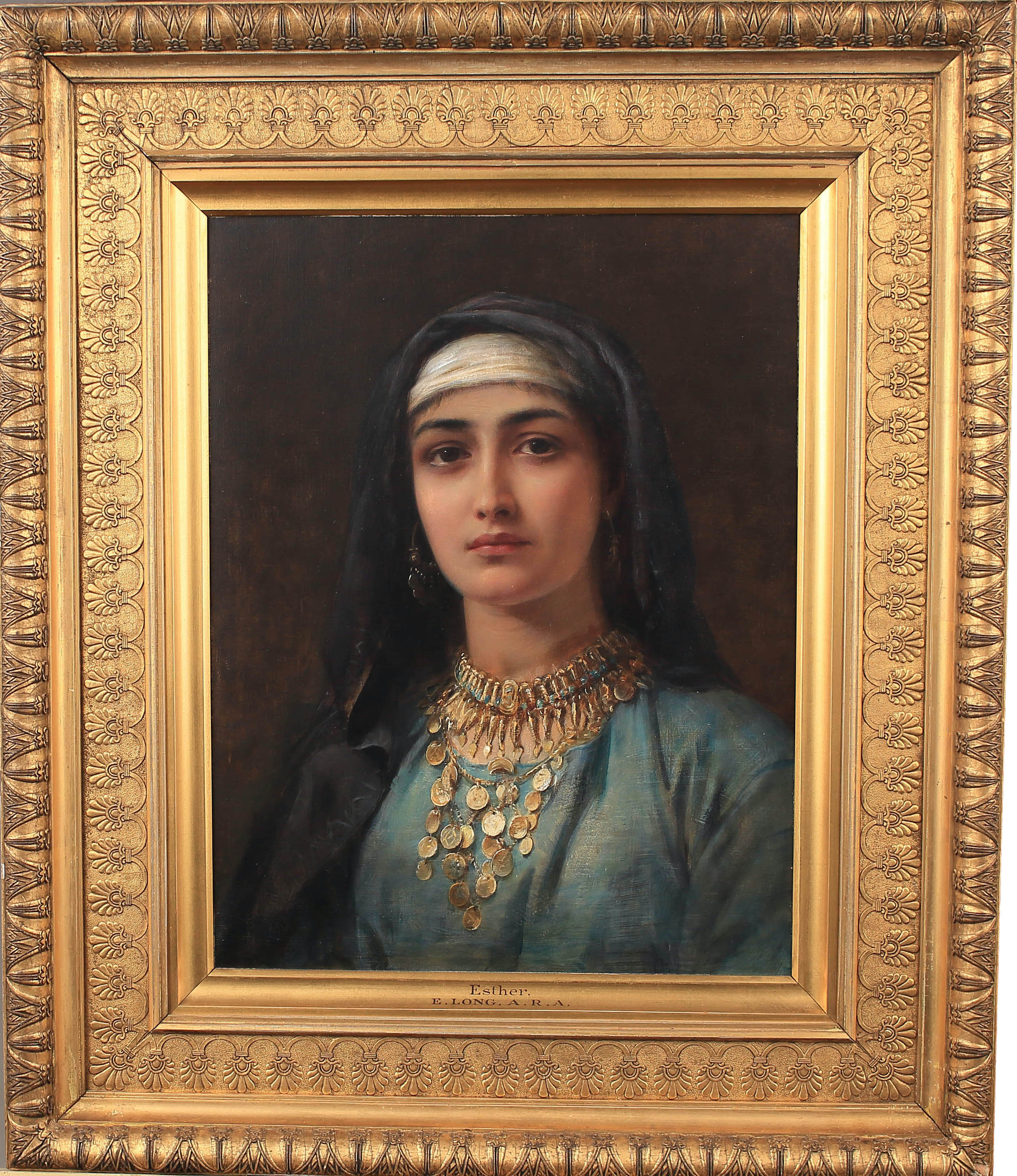Esther
Medium: Oil on canvas
Dimensions: 23.23 x 16.93 inches sight, 34 x 28 inches framed
Signed with monogram and dated ‘18EL79′
Provenance: Exhibited at The Royal Academy, London 1879 No. 102,
Private collection

Esther
Medium: Oil on canvas
Dimensions: 23.23 x 16.93 inches sight, 34 x 28 inches framed
Signed with monogram and dated ‘18EL79′
Provenance: Exhibited at The Royal Academy, London 1879 No. 102,
Private collection
Edwin Longsden Long, a British artist, turned his artistic fortunes around by producing dramatic yet sophisticated history paintings that garnered great acclaim from his contemporaries. His productions prominently featured scenes from Christianity and the Bible.
Despite his father’s reluctance to accept his desire to be an artist and his family’s hairdressing and perfumery business, Long managed to gain admission to Leigh’s Academy, an independent art academy run by artist James Matthew Leigh. This prestigious school had notable students like Lord Frederick Leighton and John Everett Millais.
Although Long faced rejection from the Royal Academy schools on two occasions, he established himself as a portrait painter in Bath after a period of traveling across Europe. While he achieved success in this area by painting local figures and important visitors, the rejection from the Royal Academy still stung, and he yearned for more recognition.
Finally, Long found success when two of his works were accepted into the Royal Academy summer exhibition. He formed a crucial acquaintance with the prominent Scottish artist John Phillip, who invited Long to accompany him on a studying trip to Spain in 1857. This journey proved transformative for Long’s career as he became enamored with the works of Spanish baroque artists Diego Velázquez and Bartolomé Esteban Murillo. Long diligently made copies of their masterpieces and produced his own original works inspired by the Bible and classical texts. He skillfully wove narratives into his pieces, effectively conveying the stories they depicted. Long’s compositions intrigued viewers, and his use of Velázquez’s baroque inspiration added a strong sense of drama.
Long’s attention to detail extended to his well-balanced use of color, as exemplified in his work “The Babylonian Marriage Market,” where vibrant colors were skillfully employed. Critics praised his meticulous research, ensuring accuracy in clothing, plant-life, and architecture. Alongside the moral merits of his works, Long’s diligence and historical accuracy were highly appreciated.
The British public and the artistic circles surrounding the Royal Academy enthusiastically received Long’s works. His focus on biblical scenes resonated in a predominantly Christian country, and his contributions aligned with the growing orientalist art movement of the time. His eloquent narratives and artistic virtues were particularly alluring to the Academy, which drew inspiration from the classical world. Long’s work was often referred to as faultless, establishing him as a master of his art. His achievements culminated in his membership in the Academy in 1881.
Edwin Long transformed from a young artist initially denied admission to the Royal Academy schools to becoming one of its stalwarts. Drawing inspiration from past masters and society’s important themes, particularly biblical scenes, Long cultivated a successful career. He explored different times and places, applying his shrewd eye and dexterous hand to create captivating and visually striking works.